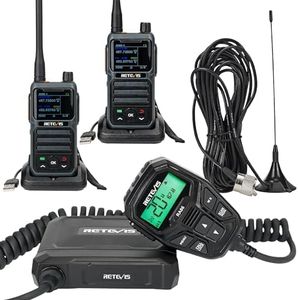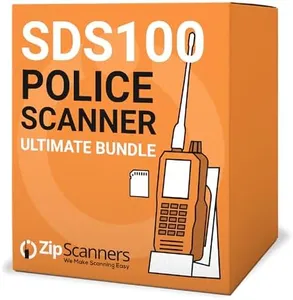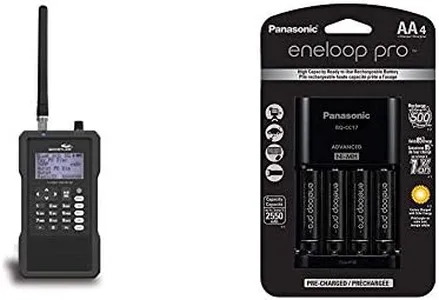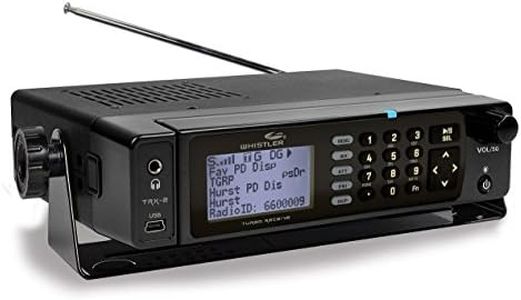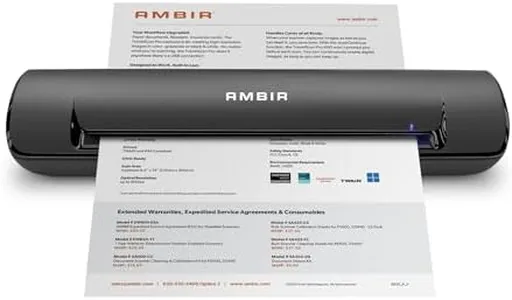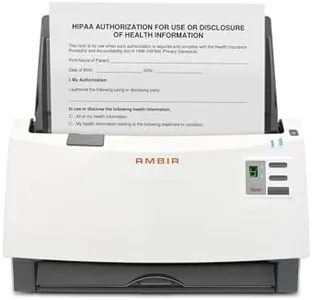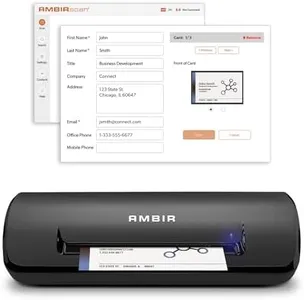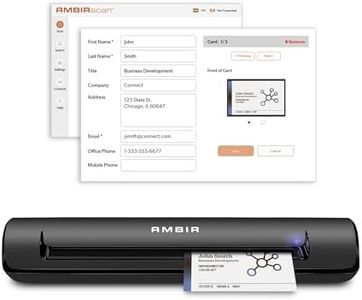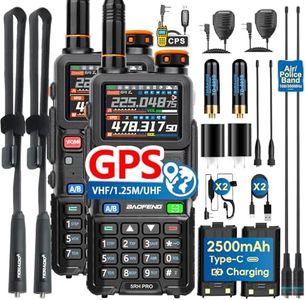9 Best Radio Scanners 2026 in the United States
Our technology thoroughly searches through the online shopping world, reviewing hundreds of sites. We then process and analyze this information, updating in real-time to bring you the latest top-rated products. This way, you always get the best and most current options available.

Our Top Picks
Winner
Whistler WS1010 Analog Handheld Scanner – 400 Channels, Skywarn, Same Weather Alerts, Spectrum Sweeper, PC Programmable, Service Banks for Police, Fire, Marine, Air & Ham – Black
Most important from
1375 reviews
The Whistler WS1010 is a compact handheld analog scanner designed primarily for users interested in monitoring public safety, weather, marine, air, and ham radio frequencies. It offers a solid channel memory with storage for up to 400 frequencies across 10 banks, which is sufficient for most hobbyists or casual scanner users. The inclusion of Skywarn storm spotter functionality and SAME weather alerts makes it especially useful for those who want timely weather warnings. The spectrum sweeper feature is a helpful tool to quickly find active transmissions nearby.
While it does not support digital or trunked systems, which limits its use for scanning some modern police and emergency communications, it covers a broad range of analog modulation modes effectively. The scanner is lightweight and portable, running on 4 AA batteries and easy to carry outdoors. Its interface is fairly simple, with preprogrammed service banks to get users started without complex setup, and it can be programmed via PC for more advanced users, although this requires additional software and cables.
The scanning speed and interface might feel basic compared to more recent models. This makes the WS1010 a reliable and user-friendly analog scanner best suited for those focused on weather, marine, and traditional analog public safety channels, rather than advanced digital or trunking features.
Most important from
1375 reviews
Uniden SDS100 Ultimate Bundle | Expert Programming, Antenna, Stand, Screen Protectors, & Uniden SDS100 Police Scanner | Works Right Out The Box Programmed for Your Area
The Uniden SDS100 Ultimate Bundle is a well-regarded choice for anyone interested in radio scanners, particularly for those who want a straightforward experience right out of the box. One of the standout features is the expert programming included, which minimizes the complexity often associated with setting up police scanners. This is ideal for beginners or those who may feel intimidated by the technology. The ability to customize which areas you want to monitor, along with programming for all US states and counties, greatly enhances its appeal.
In terms of performance, the SDS100 has an extensive frequency range and is capable of scanning both digital and analog signals, making it versatile for varied communication needs. It's also equipped with trunking capability, which allows users to access more complicated radio systems used by emergency services. The scanning speed is generally fast, ensuring you won't miss important transmissions.
Portability is another strength; the scanner is battery-powered and compact, making it easy to take on the go. This could be especially beneficial for users who enjoy outdoor activities or need to monitor communications while traveling. The bundle includes a quality antenna and a stand, but it does require a bit of a learning curve even with expert programming. The display and interface can be overwhelming for some users, especially if they want to tweak settings beyond the initial programming. Additionally, the reliance on a single lithium-ion battery might be a drawback for users seeking longer operational times without needing to recharge.
Whistler TRX-1 Handheld Digital Scanner Radio and Panasonic K-KJ17KHCA4A 4-Position Charger with AA eneloop PRO Rechargeable Batteries, 4 pk Bundle
Most important from
4 reviews
The Whistler TRX-1 is a solid handheld radio scanner suited for users interested in monitoring a wide variety of signals across a broad frequency range of 25-960 MHz, excluding cellular bands. Its simple Zip Code programming and preloaded MicroSD card make setup easy, especially for beginners. The scanner supports both analog and digital modes, which is essential for receiving modern signals. It also includes a dedicated button for SKYWARN/weather alerts, adding useful functionality for emergency or weather monitoring.
The device can record up to 50 hours of audio onto a 2GB card, which is a practical feature for reviewing important transmissions later. The scanner’s tuning steps from 2.5 kHz to 25 kHz allow flexible signal searching. The user interface is wireless-enabled and USB compatible, which adds convenience, though the display details are minimal. Portability is enhanced by its handheld design and it comes with a Panasonic 4-position charger and high-capacity eneloop PRO rechargeable batteries, supporting long use times and easy power management. The charger’s features like auto shutoff and LED indicators add safety and user-friendliness.
This bundle is well suited for hobbyists and weather watchers who want a straightforward, portable scanner with a good frequency range and reliable power setup. If extensive channel memory or advanced trunking capabilities are needed, comparing this model with others is recommended.
Most important from
4 reviews
Buying Guide for the Best Radio Scanners
When choosing a radio scanner, it's important to understand your specific needs and how different features and specifications can meet those needs. Radio scanners can be used for a variety of purposes, such as listening to emergency services, aviation, marine communications, or even amateur radio. Knowing what you want to listen to will help you make an informed decision. Here are some key specifications to consider when selecting a radio scanner and explanations to help you understand their importance.FAQ
Most Popular Categories Right Now
